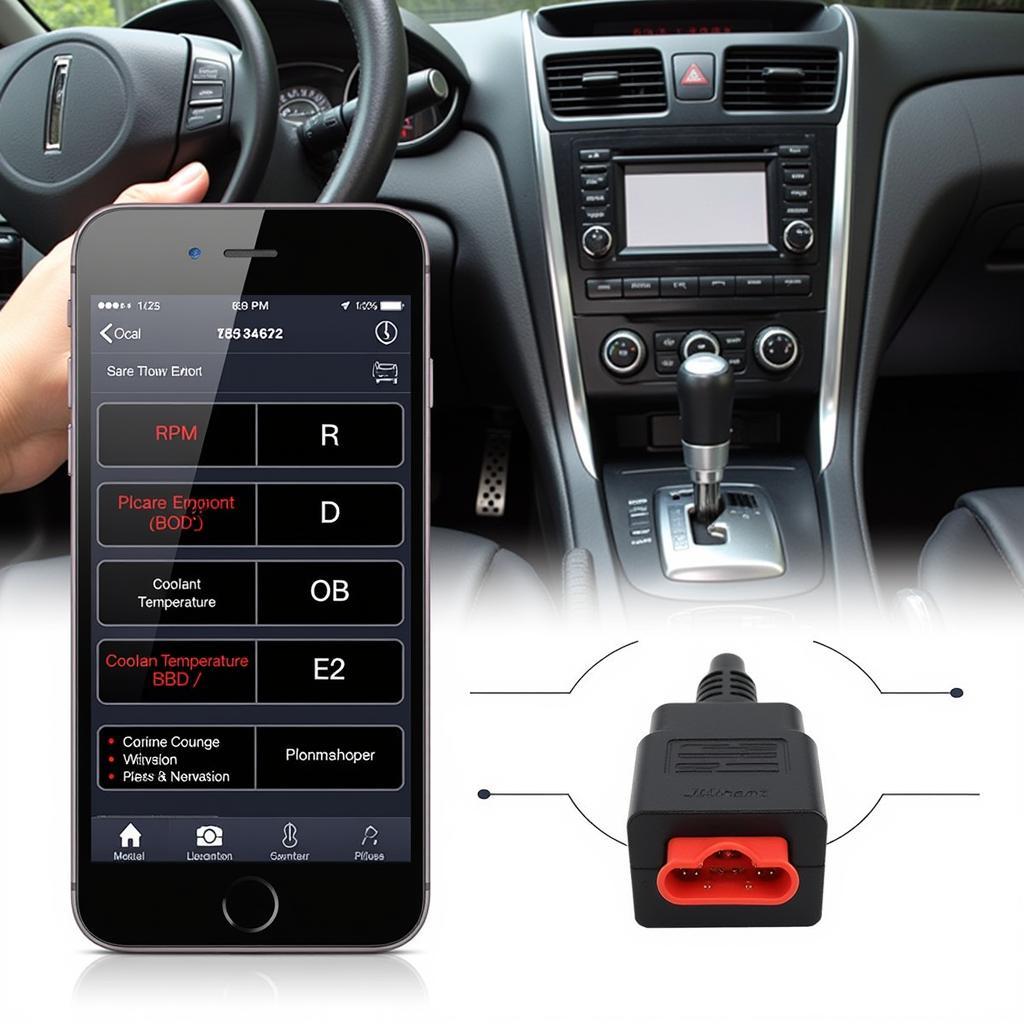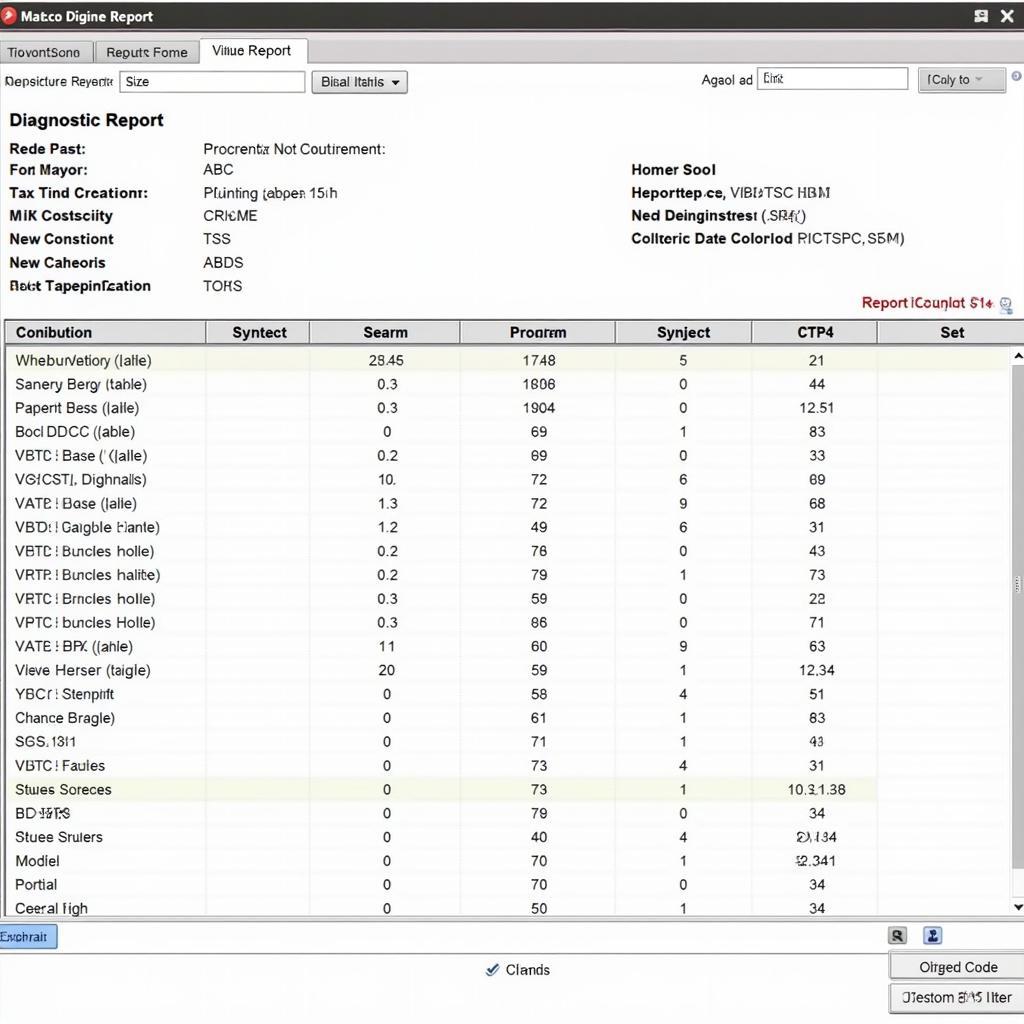Checking your car’s monitors without a scan tool might seem daunting, but it’s entirely doable with the right approach. This guide will provide you with several methods to determine if your car’s OBD-II monitors are ready for an emissions test, even without a dedicated scan tool.
Understanding OBD-II Monitors
Before diving into the methods, let’s understand what OBD-II monitors are and why they’re crucial. OBD-II, or On-Board Diagnostics, is a system that monitors your vehicle’s emission control components and overall engine performance. It does this through various “monitors,” each responsible for a specific system. These include:
- Catalyst Monitor: Evaluates the efficiency of the catalytic converter.
- Misfire Monitor: Detects engine misfires that can increase emissions.
- Oxygen Sensor Monitors: Analyze the performance of the oxygen sensors.
- EVAP System Monitor: Checks the evaporative emissions control system for leaks.
- EGR System Monitor: Monitors the Exhaust Gas Recirculation system.
When you start your car, these monitors don’t run their tests immediately. They require specific driving conditions to run completely, often referred to as a “drive cycle.” If a monitor has completed its testing cycle, it’s considered “ready.” However, if a problem is detected during testing, the monitor will not be ready, and the Check Engine Light will illuminate.
[image-1|check-engine-light-dashboard|Check Engine Light on Car Dashboard|A close-up image of a car dashboard with the check engine light illuminated, indicating a potential issue with the vehicle’s emissions system.]
Methods to Check Monitors Without a Scan Tool
While a scan tool offers the most direct way to check monitor status, you can use alternative methods:
1. The Gas Cap Trick (For EVAP Monitor)
Sometimes, a loose or faulty gas cap can trigger the Check Engine Light. This method primarily targets the EVAP monitor:
- Tighten your gas cap: Ensure it clicks multiple times.
- Drive your car: Follow your regular driving routine for a couple of days.
- Observe: If the Check Engine Light turns off, the EVAP monitor likely ran its test and reset.
Note: This method is not foolproof and only works if a loose gas cap triggered the Check Engine Light.
2. Battery Disconnect Method
This method involves resetting the ECU (Engine Control Unit) by disconnecting the battery, potentially allowing the monitors to reset:
- Disconnect the battery: Start with the negative terminal, followed by the positive.
- Wait: Let the car sit for at least 30 minutes to an hour.
- Reconnect the battery: Positive terminal first, then negative.
- Drive: This will initiate the monitor tests.
Caution: Disconnecting the battery can erase learned settings and radio presets.
[image-2|car-battery-disconnection|Disconnecting Car Battery| A person wearing protective gloves carefully disconnects the negative terminal of a car battery using a wrench.]
3. Observing Driving Patterns and Check Engine Light Behavior
This method requires keen observation and understanding your car’s behavior:
- Note the Check Engine Light: Pay attention to when it turns on, how long it stays on, and if it blinks.
- Identify patterns: If the light appears after specific driving scenarios (like highway driving), it might indicate which monitor is having trouble completing its tests.
Limitations: This method demands patience and may not pinpoint the exact monitor issue.
When to Consult a Mechanic
While these methods can provide some insights, it’s essential to acknowledge their limitations. If:
- The Check Engine Light persists.
- You’re unsure about your car’s OBD-II system.
- You need a confirmed monitor status for emissions testing.
It’s best to consult a qualified mechanic. They have the expertise and 2004 sprinter odb2 scan tool to diagnose the issue accurately.
Conclusion
Understanding How To Check Monitors Without A Scan Tool empowers you with basic troubleshooting knowledge. While the methods discussed offer workarounds, they have limitations. Remember, a confirmed diagnosis often requires a professional injector scan tool and a qualified mechanic’s expertise.
If you’re ever unsure, it’s always recommended to seek professional help. Contact ScanToolUS at +1 (641) 206-8880 or visit our office located at 1615 S Laramie Ave, Cicero, IL 60804, USA for expert assistance and reliable diagnostic solutions.
FAQs
1. Can I drive my car if all monitors are not ready?
You can drive your car, but it might not pass an emissions test.
2. How long does it take for OBD-II monitors to run their tests?
It varies depending on the monitor and driving conditions but can take multiple drive cycles.
3. Will using a code reader clear the monitors?
Reading codes doesn’t necessarily clear monitors. You might need to go through a reset procedure.
4. Can I use a specific drive cycle to get my monitors ready?
Yes, but the exact drive cycle varies depending on the car make and model. Consult your owner’s manual or search online for specific instructions.
5. Why is it important to have ready monitors?
Ready monitors are essential for passing emissions tests and indicate your car’s emissions system is functioning correctly.


